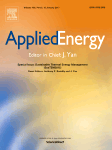College of Science
Mathematical Sciences Building
150 N. University Street
West Lafayette, IN 47907–2067
science.purdue.edu
FREDERICK L HOVDE DEAN COLLEGE OF SCIENCE – PURDUE UNIVERSITY
Purdue University invites applications and nominations for the position of Frederick L Hovde Dean of the College of Science.
The Purdue University College of Science is made up of seven departments: Biological Sciences; Chemistry; Computer Science; Earth, Atmospheric, and Planetary Sciences; Mathematics; Physics and Astronomy; and Statistics. In addition, there are numerous interdisciplinary programs and centers. The College has 326 faculty, 325 staff, and enrolls approximately 3600 undergraduate students, 1200 graduate students and 110 postdoctoral researchers. The departments in the College have a long history of excellence in research and education. Beyond the College, Purdue’s strengths in Engineering, Agriculture, Veterinary Medicine, Pharmacy, and the Health and Human Sciences contribute to a robust research and educational environment. Further information on the College of Science is available on the website at: science.purdue.edu.
The Dean’s primary role is to provide exceptional scientific vision and leadership in the College, and to foster a culture of academic excellence, freedom of expression, and inclusiveness. In addition the Dean will support the College’s interdisciplinary and core missions of learning, discovery, and engagement both internally and externally to the broad community of stakeholders with which the College engages. The Dean reports directly to the Provost, is a member of the Academic Deans’ Council and works with the College’s department heads, faculty and staff to assure that learning and research activities of the highest level of excellence flourish at all levels.
As chief academic and administrative officer of the College, the Dean actively represents the College to a variety of constituencies internal and external to the University. The successful candidate will:
- have a preeminent scientific record commensurate with the faculty in the College of Science and with the caliber of scholars the College expects to attract to Purdue;
- be an excellent administrator with a proven record of providing scientific vision and leadership and the ability to set priorities, allocate resources, and achieve specific goals;
- be an exceptional communicator;
- have a deep commitment to undergraduate and graduate education;
- be an effective fundraiser who can secure flexible support for the College;
- have substantial experience with the national research funding environment;
- be able to connect with all the constituencies served by the University and be able to articulate and advocate for the goals of the College;
- have an effective voice for and demonstrated commitment to cultural and ethnic diversity and gender equality.
Qualified candidates will have credentials appropriate for a tenured full professorship and demonstrated excellence in or potential for higher education administration.
Established in 1869, Purdue is Indiana’s land-grant university, a comprehensive educational and research institution which is a member of the prestigious American Association of Universities (AAU). The West Lafayette Campus, located one hour north of Indianapolis and two hours south of downtown Chicago, has ten colleges with an enrollment of ~40,000 students.
Nominations and applications will be accepted until the position is filled. For best consideration, applications should be received by Thursday, January 5, 2017. Applications should include a cover letter that addresses the above criteria and a full CV, and should be sent to Dean Jay Akridge, Chair, College of Science Dean Search Committee, College of Agriculture, 615 West State Street, West Lafayette, IN 47907-2053. Electronic submission is preferred and should be sent to scsearch@purdue.edu.
Screening of applicants will begin on January 6, 2017 and will continue until the position is filled. A background check will be required for employment in this position.
Purdue University is an equal opportunity/equal access/affirmative action employer. Purdue University is committed to maintaining a community which recognizes and values the inherent worth and dignity of every person. In pursuit of its goal of academic excellence, the University seeks to develop and nurture diversity. All qualified applicants for employment will receive consideration without regard to race, religion, color, sex, national origin or ancestry, genetic information, marital status, parental status, sexual orientation, gender identity and expression, disability or status as a veteran.









